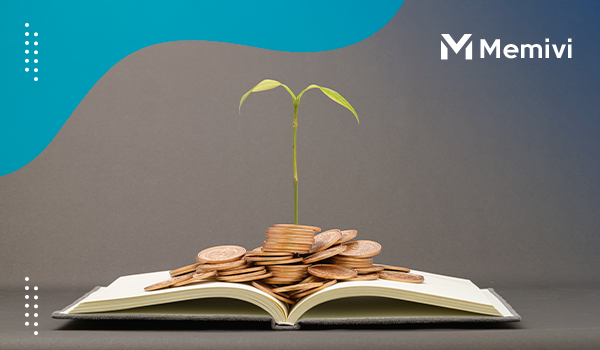
How Much Money Do You Need to Retire in Canada? Picture this: waking up without an alarm, spending your days exactly how you want, and never worrying about money again. That’s the dream of retirement—but how do you make it a reality in Canada? With rising living costs, longer life expectancies, and unpredictable markets, planning your retirement savings isn’t just helpful—it’s essential.
The truth? There’s no magic number that works for everyone. Your ideal retirement savings depend on your lifestyle, where you live, and what kind of retirement you envision. But one thing’s certain: the sooner you start planning, the more secure—and luxurious—your future will be.
In this comprehensive guide, we’ll break down exactly how much you need to retire comfortably in Canada, along with expert strategies to maximize your savings, minimize financial stress, and ensure your golden years are everything you’ve dreamed of.
Your Canadian Retirement Blueprint: Save Smart, Retire Wealthy
Retirement planning isn’t about guessing—it’s about calculating, strategizing, and taking control. Whether you want to travel the world, spoil your grandkids, or enjoy a quiet life in the countryside, knowing your number is the first step to financial freedom.
Why You Need a Solid Retirement Plan in Canada
1. The Cost of Living Keeps Rising—Will Your Savings Keep Up?
Canada is a beautiful place to retire, but it’s not cheap. Housing, healthcare, groceries, and leisure activities all add up—and inflation means your dollar won’t stretch as far in the future.
– Housing: Will you own your home outright, or will you still have mortgage or rent payments?
– Healthcare: While Canada has public healthcare, additional costs like dental, prescriptions, and long-term care can add up.
– Lifestyle: Do you plan to travel, dine out, or pursue expensive hobbies?
By calculating your retirement number now, you can adjust your savings strategy to match your future needs—before it’s too late.
2. Canadians Are Living Longer—Will Your Money Last?
With advances in healthcare, Canadians are living longer than ever. That’s great news—unless you outlive your savings.
– The average Canadian lifespan is now 82+ years, meaning retirement could last 20-30 years (or more!).
– If you retire at 65, you’ll need enough savings to cover decades of expenses—without a regular paycheck.
A well-structured retirement plan ensures you won’t run out of money, no matter how long you live.
3. Government Benefits Help—But They’re Not Enough
Many Canadians assume CPP (Canada Pension Plan) and OAS (Old Age Security) will cover their retirement needs—but these benefits only provide a fraction of what most people need.
– Average CPP payout (2024): ~$800/month
– Maximum OAS payout (2024): ~$700/month
Even combined, that’s only $1,500/month—far below what most retirees need for a comfortable lifestyle. Your personal savings and investments must fill the gap.
4. Smart Investing Can Make or Break Your Retirement
Simply stashing money in a savings account won’t cut it—inflation will erode your purchasing power over time. To grow your wealth, you need a strategy that includes:
– Diversified investments (stocks, bonds, real estate)
– Tax-advantaged accounts (RRSPs, TFSAs)
– Passive income streams (dividends, rental income)
The right investment approach can help your money grow faster, ensuring you retire with more than enough.
How Much Do You Really Need to Retire in Canada?
While everyone’s number is different, financial experts often recommend these general guidelines:
1. The 70% Rule (Moderate Retirement)
– Aim to replace 70% of your pre-retirement income.
– If you earn $70,000/year before retiring, you’ll need $49,000/year in retirement.
– Over 25 years, that’s $1.2 million in savings (not including government benefits).
2. The 4% Rule (Safe Withdrawal Rate)
– Withdraw 4% of your savings per year to avoid running out of money.
– For a $50,000/year retirement income, you’d need $1.25 million saved.
3. The “Luxury” Retirement (For Big Spenders)
– Want to travel first-class, dine at fine restaurants, and enjoy premium hobbies?
– You may need $75,000-$100,000+/year, meaning $1.8M-$2.5M+ in savings.
4. The “Frugal” Retirement (Minimalist Living)
– If you own your home outright and live simply, you might get by on $30,000-$40,000/year.
– This would require $750,000-$1 million in savings.
How to Boost Your Retirement Savings

1. Start Early—Compound Interest Is Your Best Friend
– A 25-year-old saving $500/month at a 7% return could retire with $1.4 million by 65.
– A 40-year-old starting the same plan would only reach ~$500,000.
The lesson? Time in the market beats timing the market.
2. Maximize Tax-Advantaged Accounts
– RRSPs: Reduce taxable income now, grow tax-deferred.
– TFSAs: Tax-free growth and withdrawals.
– Combined strategy: Use both to optimize tax savings.
3. Diversify Your Income Streams
– Rental properties (passive income)
– Dividend stocks (steady cash flow)
– Side hustles (consulting, freelancing)
4. Delay CPP for a Bigger Payout
– Taking CPP at 60 reduces benefits by 36%.
– Waiting until 70 increases payouts by 42%.
The Bottom Line: Your Retirement, Your Rules
Retirement isn’t about surviving—it’s about thriving. Whether you dream of world travel, a cozy cottage life, or simply financial peace of mind, the key is planning ahead.
By calculating your retirement number, optimizing your savings, and investing wisely, you can ensure your golden years are everything you’ve ever wanted—without financial stress.
Don’t Wait—Start Today! The best time to plan for retirement was yesterday. The second-best time? Right now. Take control of your future, and make your dream retirement a reality.

